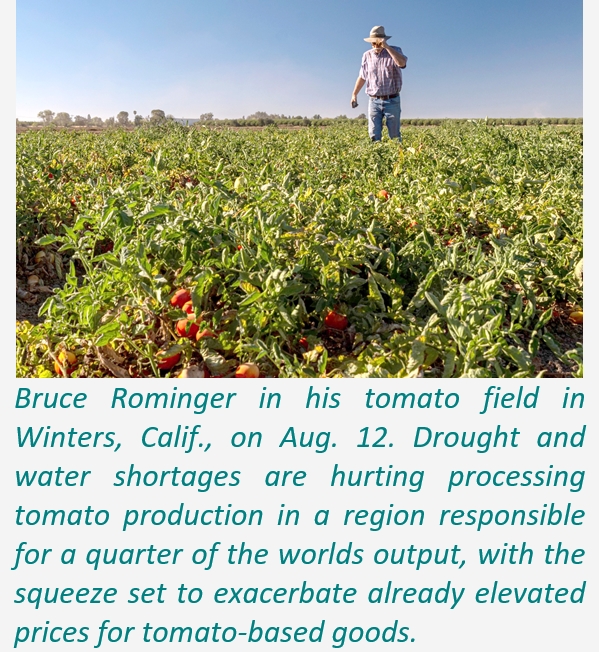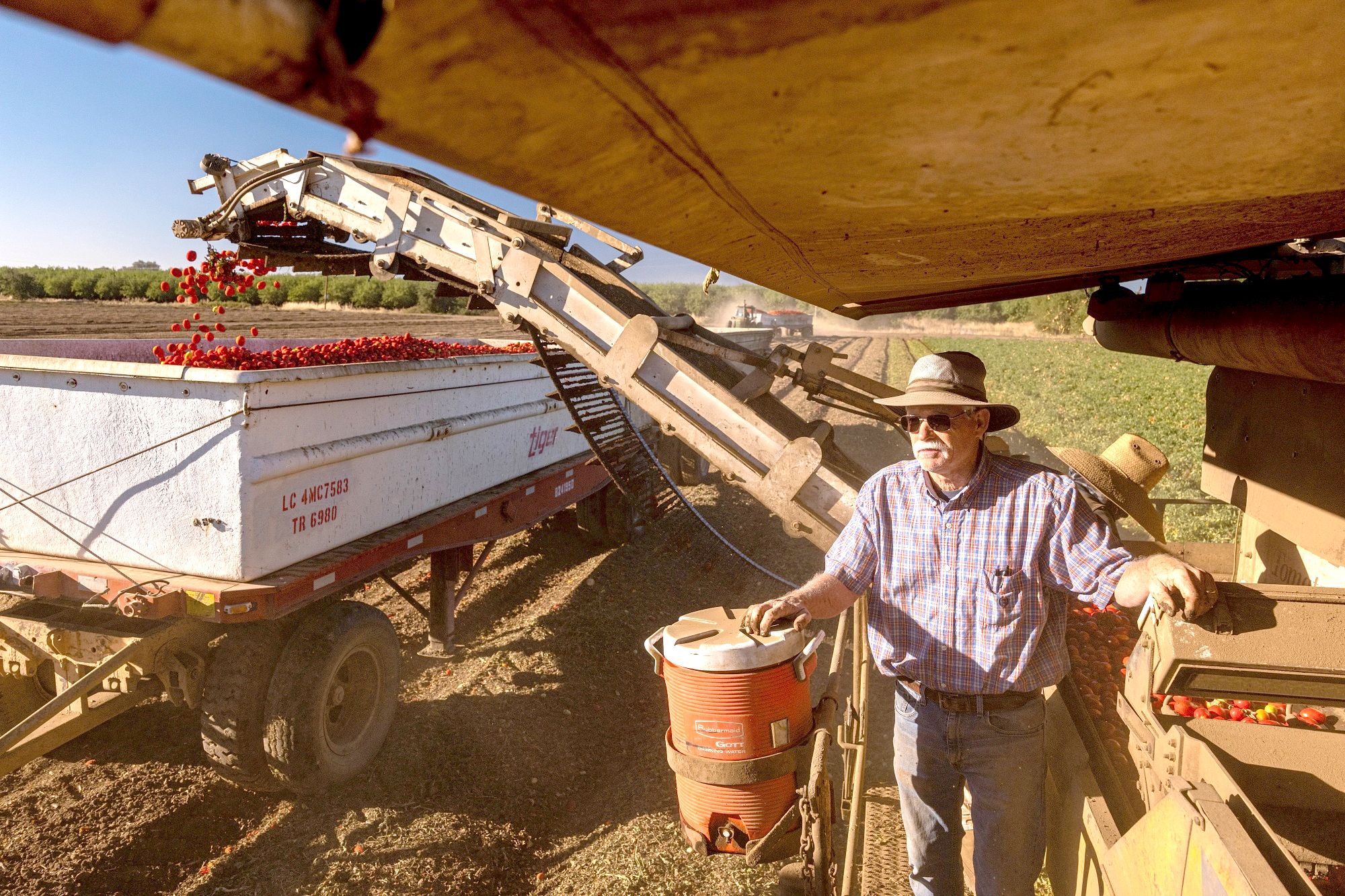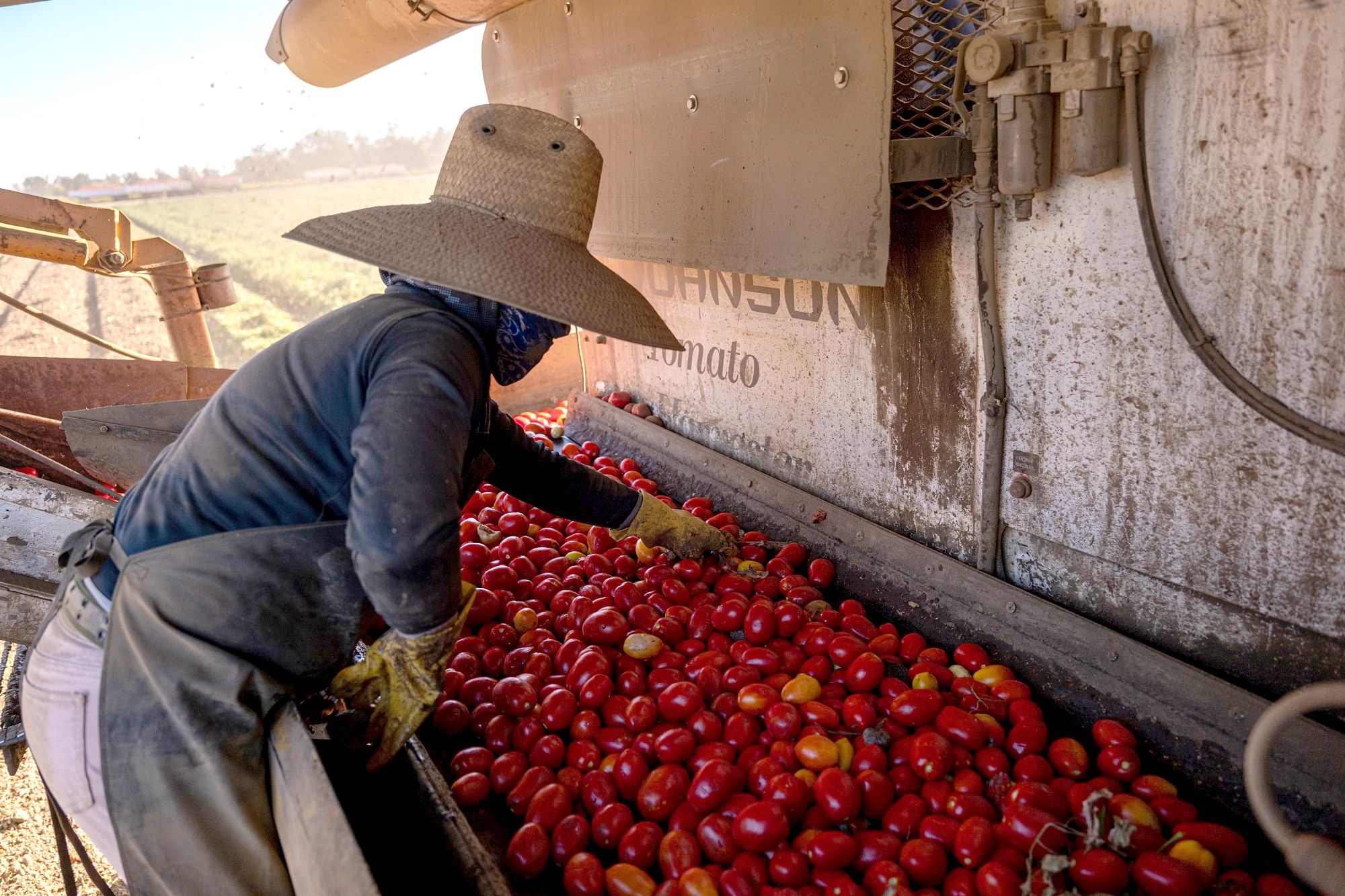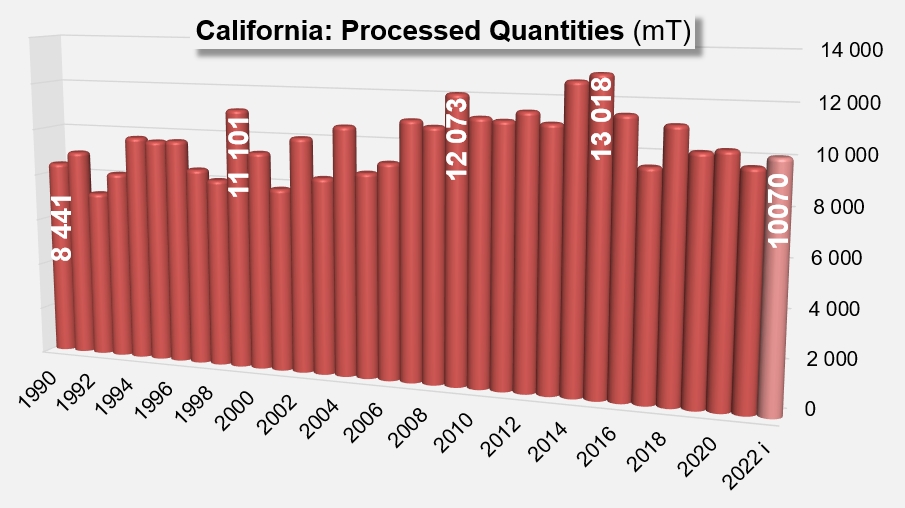Respect for your privacy is our priority
The cookie is a small information file stored in your browser each time you visit our web page.Cookies are useful because they record the history of your activity on our web page. Thus, when you return to the page, it identifies you and configures its content based on your browsing habits, your identity and your preferences.
You may accept cookies or refuse, block or delete cookies, at your convenience. To do this, you can choose from one of the options available on this window or even and if necessary, by configuring your browser.
If you refuse cookies, we can not guarantee the proper functioning of the various features of our web page.
For more information, please read the COOKIES INFORMATION section on our web page.


 Lack of water is shrinking production in a region responsible for a quarter of the world’s output, which is having an impact on prices of tomato-based products. Gains in tomato sauce and ketchup are outpacing the rise in US food inflation, which is at its highest in 43 years, with drought and higher agricultural inputs to blame. With California climate-change forecasts calling for hotter and drier conditions, the outlook for farmers is uncertain.
Lack of water is shrinking production in a region responsible for a quarter of the world’s output, which is having an impact on prices of tomato-based products. Gains in tomato sauce and ketchup are outpacing the rise in US food inflation, which is at its highest in 43 years, with drought and higher agricultural inputs to blame. With California climate-change forecasts calling for hotter and drier conditions, the outlook for farmers is uncertain.
 Such pressures are being reflected in Ingomar’s processed products. Tomato paste prices for clients of the company, which sells to some of the largest US food brands, are up as much as 80% from a year ago. With inventories dropping to critically low levels, though, supply isn’t available for everyone.
Such pressures are being reflected in Ingomar’s processed products. Tomato paste prices for clients of the company, which sells to some of the largest US food brands, are up as much as 80% from a year ago. With inventories dropping to critically low levels, though, supply isn’t available for everyone.



























